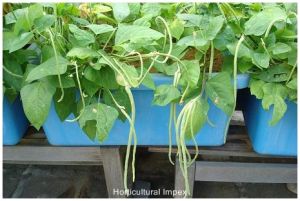
Vigna sinensis Tree Seed
Vigna sinensis a sub-erect, trailing or climbing, bushy annual, with glabrous stems, found in the warmer parts throughout India, mostly under cultivation. Leaves pinnate: leaflets 7.5-15 cm. long, ovate, flowers in recemes, white, pale violet or purple in colour with an yellow eye, turning yellow when faded; pods variable, up to 90 cm long. 10-20 seeded: seeds varying in size, shape and colour.
...more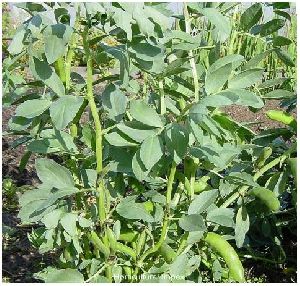
vicia faba
Vicia faba a hardy, erect, simple-stemmed annual 1 mt. tall native of N. Africa and N.W. Asia, introduced into India and at present widely cultivated all over the country for the beans which are used as a vegetable. Leaves pinnate, leaflets 1-3 pairs, elliptic to oblong, 5-10cm long obtuse buyt apiculate; flowers in small racemes, white with large purplish blotches; pods variable, up to 40cm long, thick, up to 10 seeded; seeds brown, green, purplish, or black, much compressed.
...more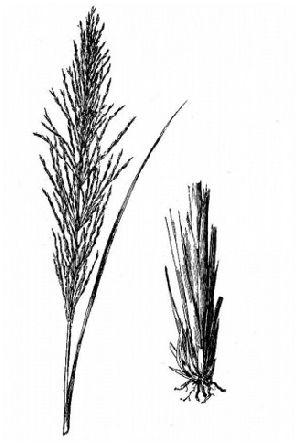
Vetiveria Zizanioides
Vetiveria zizanioides a densely tufted grass, found throughout the plains and lower hills of India, particularly on the river banks and in rich marshy soil, ascending to an altitude of c. 1200 m. Clums arising from an aromatic rhizome, stout, up to and over 2m. tall, in dense tufts, with stout spongy aromatic roots; leaves narrow, erect, keeled, glaborous, margins scabrid; inflorescence a panicle (15-40cm long) of numerous slender racemes in whorls on a central axis; spiklets grey green or purplish, 4-6mm long, in pair more or less alike in shape and size, different in sex, 2-flowered, lower floret reduced to a lemma, upper bisexual in the sessile, male in the pedicelled spiklet, glumes armed with short, tubercle-based spines, lemmas awnless, palea minute.
...more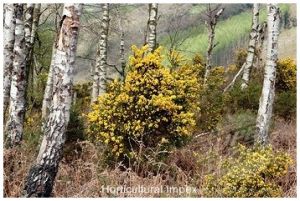
Ulex europaeus Tree Seed
Ulex europaeus a spiny , 5ft. tall, introduced in to India from England and Europe, and naturalized at the higher altitudes of the Nilgiris, Palni and Kodaikanal hills of South India; it is also cultivated in the Simla hills as a winter-fodder. Branches striped, sometimes modified in to subulate throns; leaves simply, scaly, ending in a spinescent point; flowers yellow, fragrant, solitary or impairs in the axils crowded at the ends of branchlets; pods oblong, dark brown, turgid, few seeded. It is nowgrowing wild in India over large areas in the Nilgiris, frequenting the roadsides and borders of cultivated fields.
...more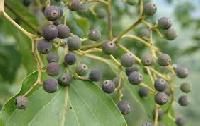
tree seeds

Trachyspermum roxburghianum Flower Seed
Trachyspermum roxburghianum a much-branched annual, up to 0.5-3ft. in height cultivated almost throughout India, chiefly in gardens. Roots fusiform; leaves bipinnately divided, ultimate segments of the lower leaves rather broad, of the upper narrowly linear-lanceolate; flowers in terminal or axillary, compound umbels, white or greenish white, small; fruits ovoid, aromatic cremocarps, 1.5 - 3.0mm. long prominently ribbed, yellow to yellowish green when ripe.This species very closely resembles and is probably a cultivated form of T. stictocarpum (C. B. Clarke) Wolff syn. Carum stictocarpum C. B. Clarke, which is found wild from the lower Himalayas to South India.
...more
Trachyspermum Ammi
Trachyspermum ammi an erect, glabrous or minutely pubescent, branced annual, up to 0.4-0.6mt. tall, cultivated almost throughout India. Stands straight; leaves rather distant, 2 - 3 - pinnately divided, segments linear, ultimate segments 1.0 - 2.5cm long; flowers in terminal or seemingly - lateral pedunculate, compound umbles, white, small; fruits ovoid, muricate, aromatic cremocarps, 2-3mm long, greyish brown; mericarps compressed, with distinct ridges and tubercular surface, 1 - seeded.
...more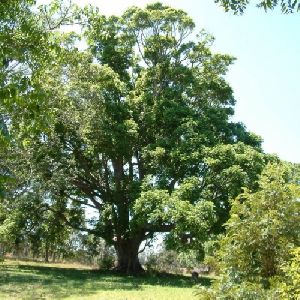
Toona ciliata
Australian Red Cedar (called also Toona ciliata, Suren or Indian Mahogany), Toona ciliata is a forest tree in the family Meliaceae which grows throughout southern Asia from Afghanistan to Papua New Guinea and Australia. In Australia its natural habitat is now extensively cleared subtropical rainforests of New South Wales and Queensland. The Australian population was formerly treated as distinct species under the name T. australis. The species can grow to around 60m (45mt.) in height and its trunk can reach 3m in girth. The largest recorded T. ciliata tree in Australia grew near Nulla Nulla Creek, west of Kempsey, New South Wales and was felled in 1883. The southern most limit of natural distribution is on basaltic soils, growing west of the Princes Highway near the village of Turmeil, south of Ulladulla, southern Illawarra, NSW. It also naturally occurs at Norfolk Island. It is one of Australia's few native deciduous trees. The timber is red in colour, easy to work and very highly valued. It was used extensively for furniture, wood panelling and construction, including shipbuilding, and was referred to as "Red Gold" by Australian settlers. Heavily and unsustainably exploited in the 19th Century and early 20th Century, almost all the large trees have been cut out and the species is essentially commercially extinct. However, the timber is relatively fast growing and following on from a wave of tree cutting in the 1950s, regrowth and timber from forestry sources currently provides trees up to 1 metre in diameter for the furniture trade in Australia and timber is not difficult to source. Timber is currently also harvested in New Guinea. Although it is not generally a viable plantation species, trees are regularly harvested by Forestry in the Atherton region of Queensland. It grows best in an environment with high light levels, however in the relative darkness of the rainforest understory, it is less susceptible to attack by the Cedar Tip Moth.
...more
Tecomella undulata
Tecomella undulata is tree species, locally known as Rohida in Urdu 'روہیڑا' found in Thar Desert regions of northwest and western India & Pakistan. This plant attains a height of 2-6mt. It is a medium sized tree that produces quality timber and is the main source of timber amongst the indigenous tree species of desert regions of Shekhawati and Marwar in Rajasthan. The trade name of the tree species is Desert teak' or Marwar teak. Tecomella undulata is a deciduous or nearly evergreen tree of arid and semi arid regions. It occurs on flat and undulating areas including gentle hill slopes and sometimes also in ravines. It is well adapted to drained loamy to sandy loam soil having pH 6.5-8.0. The species thrives very well on stabilized sand dunes, which experience extreme low and high temperatures. It grows in areas of scanty rainfall (annual 150-500mm) and high temperature (35 °C to 48 °C). It can withstand extreme low temperature (0 °C to −2 °C) during winter and high temperature (48 °C to 50 °C) in summers. The tree is a strong light demander. It is drought, frost, fire and wind hardy. At the time of flowering (December-February) it produces beautiful showy flowers in yellow, orange and red colours. Three types of flower bearing trees can be observed near to each other in the same vicinity. Distribution of Tecomella undulata is restricted to the drier parts of the Arabia, southern Pakistan and northwest India up to an elevation of 1200 metres. In Pakistan in Attock kala chita mountain where its local name is ہروڑا it is found in Baluchistan and Sindh. In India, it occurs naturally in Maharashtra, Gujarat, Rajasthan, Punjab and Haryana. The species is mainly found to occur in western parts of Rajasthan. In other states its population is scanty and very rare. In Rajasthan, Tecomella undulata is found in Barmer, Jaisalmer, Jodhpur, Pali, Ajmer, Nagaur, Bikaner, Churu and Sikar districts. Tecomella undulata is an accepted tree species in agro forestry and large population is found in agricultural lands. It can be observed growing in community land, forestland and orans in association with Prosopis cineraria, Capparis decidua, Maytenus emarginata, Zizyphus spp. And Salvadora spp. In agriculture land it generally grows in association with Prosopis cineraria.
...more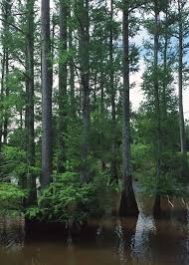
Taxodium mucronatum
Taxodium mucronatum a semi-evergreen or evergreen, magnificent tree, up to 40ft. in height and 15m in girth, much allied to T. distichum, introduced into the Nilgiris, Kerala and Dehra Dun. It differs from T. distichum by its habit, more tender leaves and longer male inflorescences. In Kerala, it has been found to grow fairly well above 800m. It has been found to grow fairly well above 800m. It is well suited also to the soil and climate of Dehra Dun. Propagation is done by both seeds and cuttings.
...more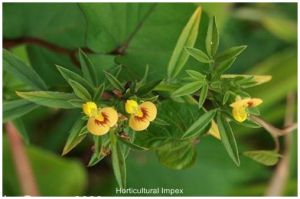
Stylosanthes hamata Flower Seed
Stylosanthes hamata Short spreading and busy in appearance. Green colour of leaves, growing to a height of maximum 1 ft., profusely branching.
...more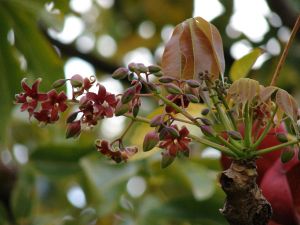
Sterculia Foetida
Sterculia foetida is a large, straight, deciduous tree growing to 40 m in height and 3 m in girth, with the branches arranged in whorls and spreading horizontally. The bark is smooth and grey. Leaves crowded at the ends of branchlets, digitate, with 7-9 leaflets; leaflets elliptical or elliptic-lanceolate, acuminate, 10-17 cm long, shortly petioluled, with unpleasant smell; petiole 12.5-23 cm long. Flowers in many panicles, subterminal, 10-15 cm long; rather large, green or dull purple; unisexual, with male and female flowers on separate trees; calyx dull, orange coloured, deeply 5-partite; lobes 1-1.3 cm long. Follicles scarlet, 7.6-9 x 5 cm, very stout, ultimately woody; seeds 10-15, slatecoloured, ellipsoid, oblong, 1.5-1.8 cm with rudimentary yellow aril. The generic name is based on the Latin word ‘stercus’, meaning ‘manure’, which refers to the smell of the flowers and leaves of some species. The malodorous nature of the tree is emphasized in the species name, ‘foetida’, meaning ‘stinking’. In India, new leaves appear in March-April, just after flowering. The flowers, which have a foetid smell, appear in March when the tree is leafless. Fruits ripen the following February, nearly 11 months after the 1st appearance of the flowers. S. foetida is dioecious.
...more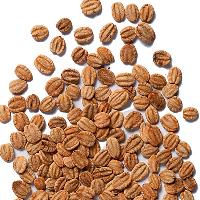
shrub seeds
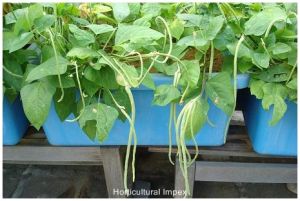
Sesbania sesban
Sesbania sesban a soft wooded, quick-growing short lived shrub, 4-8mt. high, found cultivated throughout the plains of India up to an altitude of 1200m. Leaves 7.5-15cm long paripinnate, leaflets 8-20 pairs, linear-oblong, glabrous, entire, mucronate to acuminate, 6.0-25.0mm x 2.5-6.0mm, flowers yellow or yellow spotted red to purple or with standard petals coloured purple or brown form outside, in 8-10 flowered, lax, axillary racemes, 2.5-14.0cm long; pods 12.5-22.5cm x 0.25-0.37cm; pendulous, weak, distinctly torulose, twisted, sharply beaked, 20-30 seeded and sepate.
...more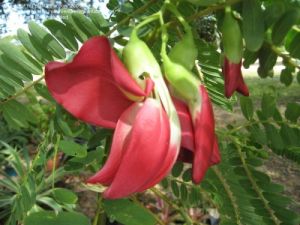
sesbania grandiflora
Sesbania grandiflora a short-lived, quick-growing, soft-wooded tree, 15mt. High and 0.6m in girth it is a natice of Malaysia and is grown in many parts of India such as Punjab, Delhi, Bengal, Assam and the Andamans. Leaves 15-30cm long, abruptly pinnate; leaflets 41-61, linear-oblong, glabrous, 2.5-5.0cm x 0.5 - 1.6cm; racemes 2 - 4 flowered, short, axillary; flowers 6.0-10cm long with showy, fleshy white, pink or crimson petals; pods pendulous 30.0 - 45cm x 0.6-0.8cm, rather flat and somewhat 4-cornered, non-torulose, septate with swoolen margins and 15-50 pale coloured seeds. Agathi is grown for oranament and is valued as food and also as a good fodder. It is grown as a support for pepper and betel vines, as shade plant for coconut seedlings, and as wind-break in banana fields. Bark yields a good fibre and a gum annd various parts of agathi have medicinal value.
...more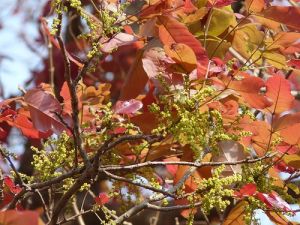
Schleichera Oleosa
Schleichera oleosa is A medium-sized to large, deciduous or nearly evergreen tree, up to 20mt. in height and 2.4 - 3.7 m in girth, usually with clear bole of c. 6 m, found in the sub-Himalayan tract for Kashmir to West Bengal and in central and penisular India, up to an altitude of 900m, especially in the moist localities; also recorded from the Garo hills. It is often grown for cultivation of lac, for oil, and for ornament. Bark grey or brown, reddish inside, exfoliating in small, round, irregular flakes c. 8 mm. thick; leaves paripinnate, 20 - 40 cm long; leaflets elliptic or elliptic-oblong, coriaceous, 5-25 cm x 3-10cm, 2-4 pairs; flowers minute, yellowish green, either male or bisexual, in axillary racemes; berries smooth or slightly prickly, globose or ovoid, hard-skinned, 1.25 - 2.5 cm, x 1.1-1.8cm, 1-2 seeded; seeds brown, irregularly ellipsoidal, 1.0 - 1.5cm x 0.8 - 1.25cm, slightly compressed, oily , enclosed in a succulent aril which dries up on the seed.
...more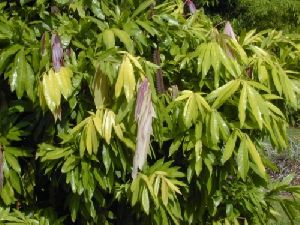
saraca asoca
Saraca asoca is a small evergreen tree, 15-20ft. high, found wild along streams or in the shade of evergreen forests. It occurs almost throughout Indian up to an altitude of 750m in the central and the eastern Himalaysa and the Khasi, Garo and Lushai hills; it is also found in the Andaman Islands. Leaves paripinnate, 15-20cm long, leaflets 6-12oblong or oblong-lanceolate, 7.5-22.5cm x 1.25cm, rigidly sub-coriaceous; flowers orange or orange-yellow, eventually turning vermillion, very fragrant, in dense axillary corymbs; pods flat, leathery, 10-25cm x 3.5-5cm, seeds 4-8, ellipsoid-oblong, 38cm, compressed.
...more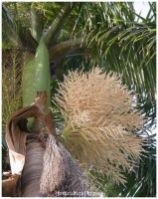
Roystonea Regia
Roystonea regia, a tall graceful palm growing up to 10-12mt. or more with a columnar bole, native of Cuba, found cultivated in Indian gardens. Trunk smooth, generally slightly swoolen about the middle and covered all over with a white substance; leaves up to 3.0 m long, leaflets about 80 cm long and 2.5cm wide; fruits globose-oblong, 1.0-1.6cm long, purplish; seeds broadly ovoid-elliptical, with a homogeneous albumen. The trunk of the Royal Palm is swollen at the base. It constricts about halfway up and then bulges again just below the crownshaft creating a dramatic profile. The trunk is a smooth light gray that looks as if it had been cast from concrete. Royal palm produce a large 3' to 4' inflorescense on which both male and female flowers are borne, just at the base of the green crownshaft. Royal palm is native to cuba.
...more
Pueraria Phaseoloides
Pueraria phaseoloides Vigorous, deep-rooted, perennial twining and climbing legume, slightly woody, hairy. Its main stems are slender, 6 mm in diameter and up to 10 m in length, rooting at the nodes upon contact with moist soil. Secondary branches arise from the nodes to create a dense mass of vegetation 60-75 cm deep if left ungrazed or uncut. Young shoots are densely covered with brown hairs. Leaves large, trifoliate, borne on petioles 5-10 cm long covered with ascending hairs. Leaflets thin, triangular-ovate, 2-20 cm x 2-15 cm, usually very shallowly lobed; lateral leaflets oblique 6-7 cm long and wide. Flowers small, mauve to deep purple, borne in scattered pairs in axillary racemes about 15-30 cm long on peduncles about 12.5 cm long. Pod straight, or slightly curved, linear, cylindrical, 4-11 cm x 3-5 mm, thinly covered with stiff adpressed hairs, turning black when ripe. Seeds 3 mm x 2 mm, oblong to squarish with rounded corners, brown to brownish black in colour. 10-20 seeds/pod . Seed weight 81400-88000/kg.
...more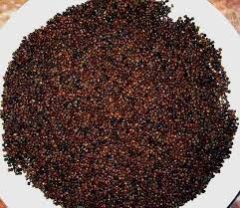
pueraria javanica
Pueraria javanica Vigorous twining and climbing slightly woody, deep rooting legume. This plant attains a height of 10mt. Leaves large, trifoliate, leaflets thin, triangular, ovate, very shallowly lobed. Small mauve to deep purple flowers borne in scattered pairs in axillary racemes about 15 to 30 cm long. Pods straight, slightly curved, linear, cylinderical, 7.5 - 8.5cm long, black when mature containing 10 - 20 seeds. Seeds oblong to squarish with rounded cornes, brown to brownish black, about 3 mm.
...more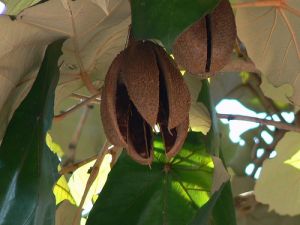
Pterospermum acerifolium
Pterospermum acerifolium An evergreen tree, up to 50-70 ft. in height and c. 25m in girth, with a clean bole up to 12m, found in the sub-Himalayan tract and outer valleys from Yamuna eastwards to West Bengal, and in Assam and Manipur, up to an altitude of c. 1,200m extending southwards into Ramnagar hills of Biharand in western ghats of Konkan and North Kanara; it is also common in the Andamans. Bark greyish brown; leaves variable in size and shape, 25-35cm x 15-30cm entire or variously lobed, oblong, cordate or sometimes peltate; flowers large, 12-15cm in diam., axillary, solitary or in pairs, white, fragrant; capsules oblong, 5-angled, dark brown, woody; seeds winged, brown.
...more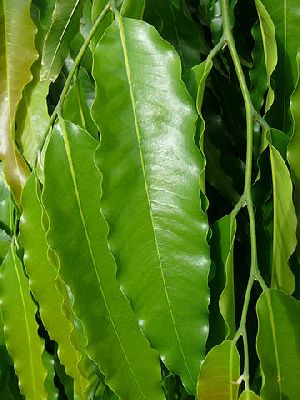
Polyalthia longifolia
Polyalthia longifolia is a tall, handsome, evergreen tree with astraight trunk, condidered to be a native of the drier parts of Ceylon, very commonly cultivated all over India, in gardens and avenues. Bark smooth, greyish brown, thick; leaves glossy green, lanceolate with undulate margins; flowers in fascicles, yellowish green; fruit a cluster of small ovoid, purple, I-seeded carpels. There are also forms of this tree with markedly drooping branches. The tree grows well in moist and warm localities. Propagation is through direct sowing of seeds at site or planting 2-year old seedlings raised in pots or baskets. The seeds retain their viability for one season only and should be sown in August. It has been recommended for growing in tall hedges. It is reported to be subject to die-back disease caused by a species of Phomopsis. A number of defoliating larvae and a few other insect pests have also been recorded.
...more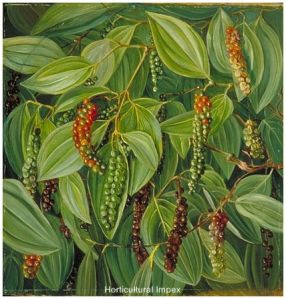
Piper Nigrum
Piper nigrum a branching, climbing perennial shrub, mostly found cultivated in the hot and moist parts of India, Ceylong and other tropical countries. Branches stout, trailing and rooting at the nodes; leaves entire, 12.5-17.5 by 5.0 - 12.5cm, very variable in breadth, sometimes glaucous beneth, base acute rounded or cordate, equal or unequal; flowers minute in spikes, usually dioecious, but often the female bears 2 anthers, and the male, a pistillode; fruiting spikes very variable in length and robustness, rachis glabrous; fruits ovoid or globose,
...more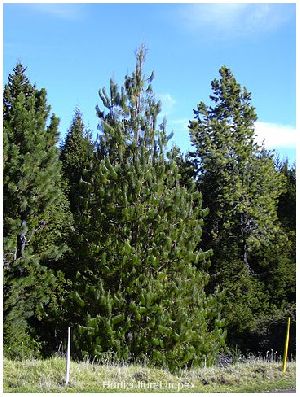
Pinus Patula
Pinus Patula round to broadly spreading tree with scaly, reddish brown bark, pale - green - brown, glaucous shoots. This plant attains a height of 50mt. Slender, pendent, shiny, lightgreen leaves, 15-30cm long, brone in trees, rarely four or fives. Stalkless is long conical, yellow to chestnut-brown female cones, 6-10cm long. The flowers are monoecious (individual flowers are either male or female, but both sexes can be found on the same plant) and are pollinated by Wind.The plant is not self-fertile. This plant prefers light (sandy) and medium (loamy) soils, prefers well-drained soil and can grow in nutritionally poor soil. Suitable pH: acid and neutral soils. It cannot grow in the shade. It prefers dry or moist soil and can tolerate drought. A tan or green dye is obtained from the needles. The needles contain a substance called terpene, this is released when rain washes over the needles and it has a negative effect on the germination of some plants, including wheat.
...moreBe first to Rate
Rate ThisOpening Hours